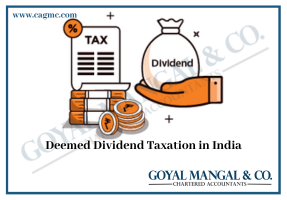
The Indian Premier League (IPL) is the most lucrative domestic T20 cricket league in the world, attracting top talent from around the globe. With massive sponsorships and broadcast deals, IPL franchises are willing to shell out millions of dollars to secure the services of the best players. Let us decode the salary structure of the IPL players in this article.
|
Table of Content |
Overview of IPL players
The Indian Premier League (IPL) is the most lucrative domestic T20 cricket league in the world, attracting top talent from around the globe. With massive sponsorships and broadcast deals, IPL franchises are willing to shell out millions of dollars to secure the services of the best players.
Firstly, it’s important to note that there are two types of players in the IPL- Indian players and overseas players. The minimum base salary for an Indian player is INR 20 lakhs (approx. $27,000), while the minimum for an overseas player is $50,000. However, the top players can earn much more than this through a combination of various components.
How do the IPL Teams make money?
The primary source of revenue is the official sponsors of the IPL. For example, Vivo is the main sponsor of IPL 9, 2016, along with other sponsors like Yes Bank, Vodafone, etc. A certain percentage of the revenue that the tournament/BCCI generates from its sponsors (around 60%) is shared equally among all the franchises, which is a guaranteed amount that each IPL team generates from the league’s official sponsors annually.
- Another huge share of revenue comes from broadcasting rights. Sony Entertainment entered into a media broadcasting rights deal with BCCI for Rs. 8,200 crores in 2017. Much of this money is distributed among the franchises through the BCCI. This is the additional guaranteed income that all franchises earn annually.
- Every team has its own set of dedicated sponsors. A player’s jersey is seen as less as the jersey and more as the sponsors. Sponsors who have signed contracts with individual franchises thus create a lot of publicity.
- In the IPL, a lot of revenue is generated from stadium tickets. Franchises make a lot of money from the tickets they sell during their respective “home” games. The stadium also sells a lot of merchandise, such as t-shirts and souvenirs, along with food and drink. In short, the main part of all the activities that can be seen in the stadium belongs to the owners of the host team.
- Teams also earn money annually through player transfers and swaps. Needless to say, the teams earn a lot of money if they win the IPL, as the reward for the championship is huge.
How are the IPL players paid?
The IPL players are paid in the following ways-
- The right players need to be selected for a tournament as big as the IPL, before getting the team up and running for a season.
- Each team receives a purse from which they must bid for players in the auctions. A team cannot exceed the value of the purse, so they must be extremely judicious when bidding aggressively.
- Players are purchased by franchises for the entire season, and bidding begins at the base price assigned to each player. After winning a bid for a particular player, the franchise will get the particular player to sign with them.
- A player is paid based on his availability throughout the season. A player’s IPL salary is affected if he is unavailable for the entire season. This situation is faced by franchises many times when foreign players leave the tournament midway through to fulfill national duties.
- For domestic players, IPL has been a big financial boost in their careers. The money gave them another advantage in the form of job security. Players also get nice incentives if their team wins the championship. Also, a certain percentage of the championship money is divided among the players.
- Even during the tournament, there is a lot of money to be won by players. Big prizes are up for grabs after each game for the man of the match, the players with maximum sixes, and best fielder. After the tournament, the orange cap holder (most runs in the tournament) and the purple cap holder (most wickets in the tournament) will receive handsome rewards from IPL.
Introduction to IPL Fees
The fees paid by the IPL team owners to the cricketers are a combination of various components such as the base fee, match fee, signing amount, etc. The base fee is the amount that the team owner pays to the player for being a part of the team. The match fee is the amount that the player receives for playing in a match. The signing amount is the fee that the team owner pays to the player for signing him for the team. These fees are subject to taxation.
Components of salary structure of IPL players
Let’s take a look at the various components of the salary structure:
- Base Salary – This is the fixed amount that a player is guaranteed to receive for the season. The base salary varies depending on the player’s experience, performance, and demand in the auction. The base salary for the top players can go up to INR 15 crores (approx. $2 million) for Indian players and $2.2 million for overseas players.
- Match Fee – In addition to the base salary, players also receive a match fee for each game they play. The match fee is calculated based on the player’s base salary and the number of matches they play. The match fee for the top players can be as high as INR 1.5 crores (approx. $200,000) per match.
- Signing Bonus – Some players may receive a signing bonus as part of their contract. This is a one-time payment made to the player upon signing the contract. The signing bonus can be as high as 10% of the player’s base salary.
- Prize Money – IPL franchises compete for a hefty prize pool at the end of the season, with the winning team taking home around INR 20 crores (approx. $2.7 million). Some franchises may also offer additional bonuses to players for individual or team performances during the season.
- Endorsements – IPL players are some of the most marketable athletes in the world, and many of them have lucrative endorsement deals with various brands. Some players may earn more from endorsements than from their IPL contract itself.
In addition to these components, some taxes and deductions need to be taken into account. The Indian government levies a tax of 20% on the salaries of overseas players, while Indian players are taxed based on their income tax slab.
Salary structure of the IPL players
The payment is not made in one go but in three installments. As per the latest IPL contract, the following payment structure has been proposed:
- 10% within 10 days of the first game of the season.
- 60 % during the season.
- 20% after the end of the season.
This structure was followed for IPL 2023, which began in the last week of March.
As per the income tax rules, the respective franchises deduct TDS (Tax Deducted at Source) before releasing the money to the players. The charges of TDS on the Indian players is 10% TDS on the total bid amount while for foreign players it was 20% of the amount.
The players are required to sign a tripartite agreement with the BCCI as well as the franchise regarding payment. In case of failure of payment by the franchise; the BCCI will make the payment and deduct the relevant amount from the franchise’s central revenue fund.
Certain Circumstances for the Payment made to IPL Players
The following are certain circumstances for the payment made to IPL Players:
In case a player is bought for Rs 10 crore (Rs 100 crore), that amount is paid for playing one IPL season: In case the player is brought for 10 Crore, the payment made to IPL Players in following manner:
- The contract with the players is for years.
- The said player will be entitled to a total of Rs 30 crore or Rs 300 crore (Rs 10 crore per season, subject to availability).
- Interestingly, all players in the squad will get their full money regardless of whether they are selected in the playing XI or not.
For foreign players, the cricket associations of the respective country will get 20% of what they earn in the IPL
In case the player is of Foreign Country, the cricket associations of the respective country will get 20% of what they earn in the IPL, and the payment made to their IPL Players in following manner:
- If a West Indies player is bought in the auction for Rs 5 crore (Rs 50 crore), then the West Indies Cricket Board is paid Rs 1 crore (Rs 10 crore), which is shared equally between the BCCI and the respective franchises.
- When the IPL was launched in 2008, player bids were in US dollars and players were also paid in the same mode. However, IPL auctions and player salaries have shifted to Indian rupees since 2012.
In the event of an injury, if a player is injured during the season or in net practice, he is entitled to his full salary, with the franchise covering his Medical Expenses
In case of injury the payment is made in the following manner:
- In case the BCCI is unable to conduct the entire IPL season, the players will also receive their full salaries.
- Moreover, for Indian players who are under the BCCI contract, even if they miss the entire IPL season due to injury, they are compensated by the board.
Taxes on IPL Player Salaries
The Indian government levies a tax of 20% on the salaries of overseas players. This tax is deducted at source by the IPL franchise before the payment is made to the player. For example, if an overseas player has a base salary of $1 million, the franchise will deduct $200,000 as tax before making the payment to the player.
Indian players are taxed based on their income tax slab. The tax is deducted at the source by the IPL franchise before making the payment to the player. The franchise is also required to deduct TDS (Tax Deducted at Source) on the match fee paid to the player.
- Taxation of Fees received by Cricket Players from IPL Team Owners: The fees received by cricket players from IPL team owners are taxable under the Income Tax Act, 1961. The fees received by the players are considered as income from other sources, and are subject to tax as per the prevailing tax rates.
- Taxation of Indian Players: Indian players who are a part of the IPL teams are subject to taxation as per the Indian income tax laws. The income received by the players from the IPL teams is added to their total income and is taxed at the applicable tax rates.
Indian cricketers are taxed as per the income tax slabs applicable to them. The income tax slabs for the financial year 2022-23 are as follows:
| Income Tax Slab | Tax Rate |
| Up to Rs. 2.5 lakh | Nil |
| Rs. 2.5 lakh – Rs. 5 lakh | 5% |
| Rs. 5 lakh – Rs. 7.5 lakh | style=”border: 1px solid #555;”10% |
| Rs. 7.5 lakh – Rs. 10 lakh | 15% |
| Rs. 10 lakh – Rs. 12.5 lakh | 20% |
| Rs. 12.5 lakh – Rs. 15 lakh | 25% |
| Above Rs. 15 lakh | 30% |
- Taxation of Foreign Players: Foreign players who are a part of the IPL teams are subject to taxation as per the Indian income tax laws if they are physically present in India for more than 182 days in a financial year. In such cases, their income received from the IPL teams is added to their total income and is taxed at the applicable tax rates.
- Taxation of Foreign Players who are not Physically Present in India: Foreign players who are not physically present in India for more than 182 days in a financial year are not subject to taxation as per the Indian income tax laws. However, they may be subject to taxation in their home countries as per the respective tax laws.
- TDS on Fees received by Cricket Players from IPL Team Owners: The IPL team owners deduct tax at source (TDS) on the fees paid to the cricket players. The TDS rates applicable to the fees paid to the players are as per the prevailing tax rates. The TDS deducted by the IPL team owners is then deposited with the Indian government on behalf of the players.
Conclusion
The fees paid to the cricketers by the IPL team owners are subject to taxation. The cricketers need to pay tax on the income earned from the IPL fees as per the income tax slabs applicable to them. Indian cricketers are taxed as per the income tax slabs applicable to them, while foreign cricketers are subject to TDS under Section 194E of the Income Tax Act, 1961. Cricketers need to be aware of the tax implications on their IPL fees and should pay their taxes on time to avoid any penalties or legal actions.







